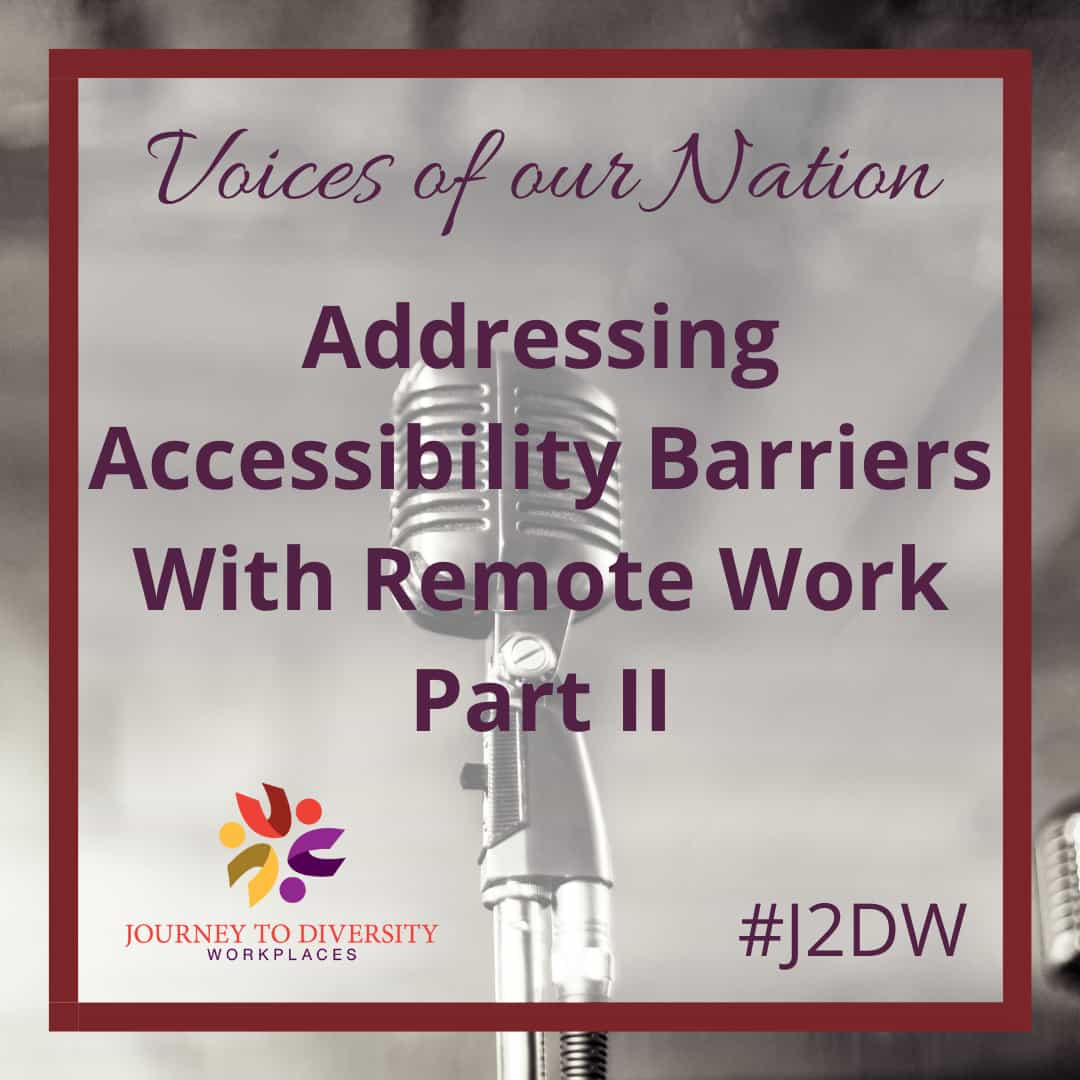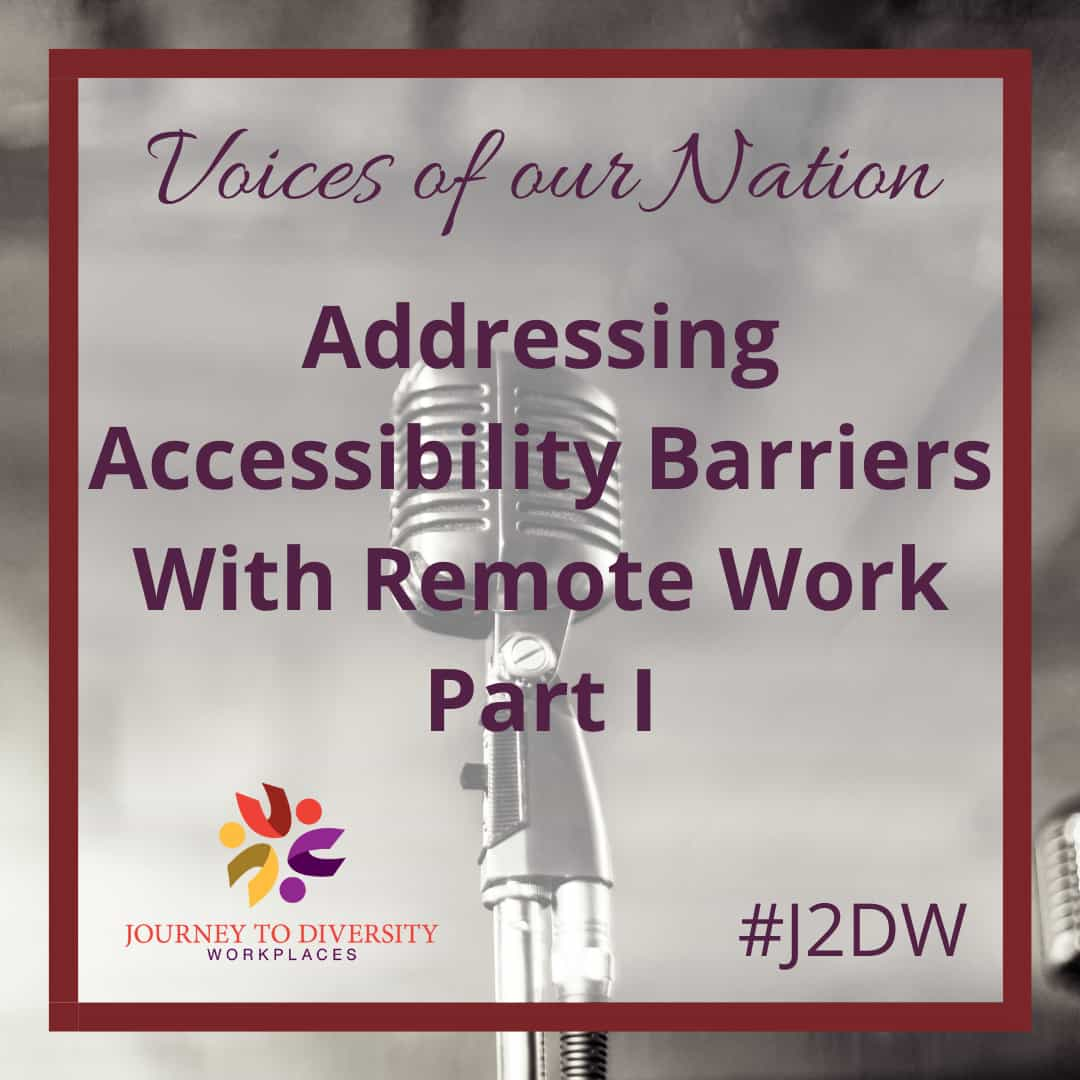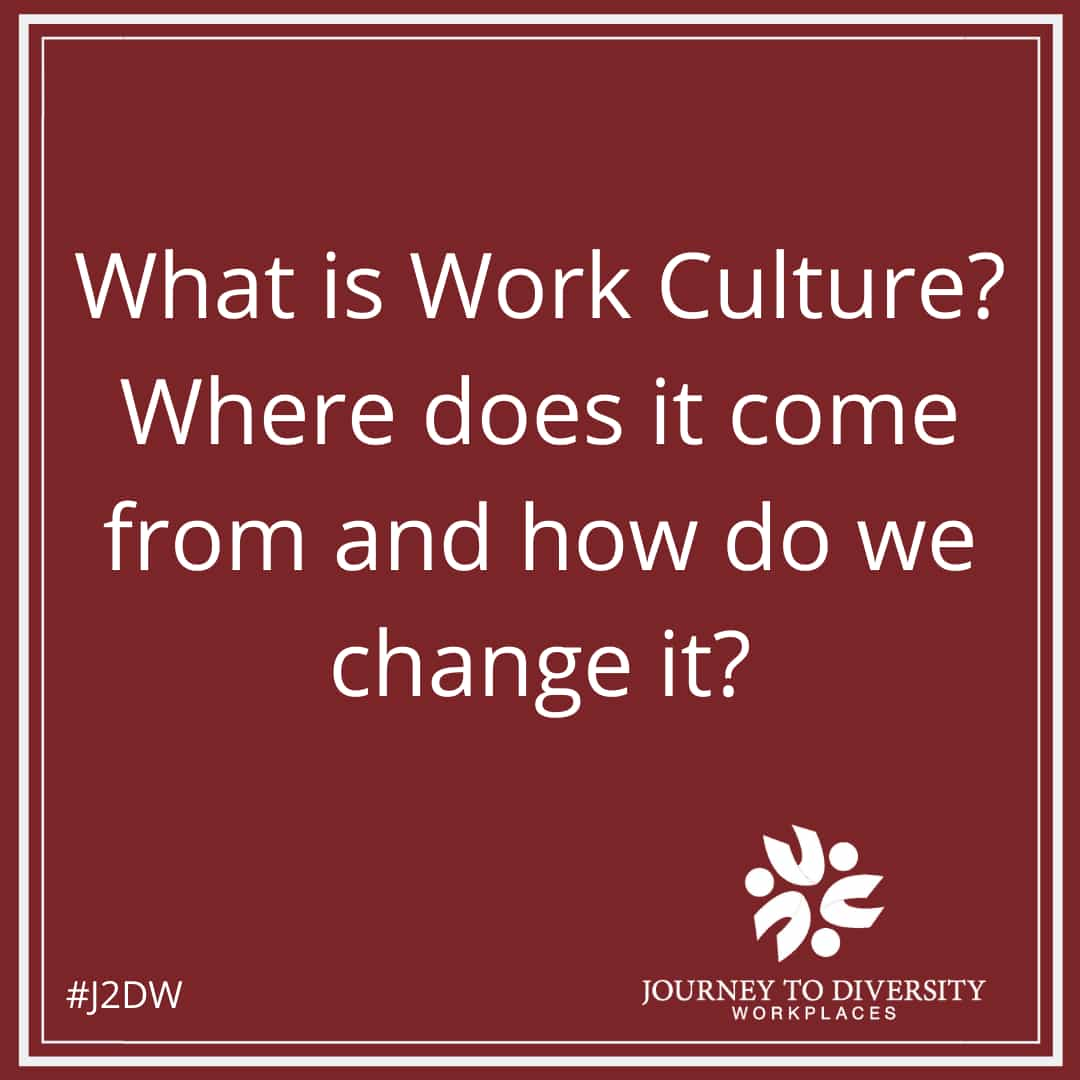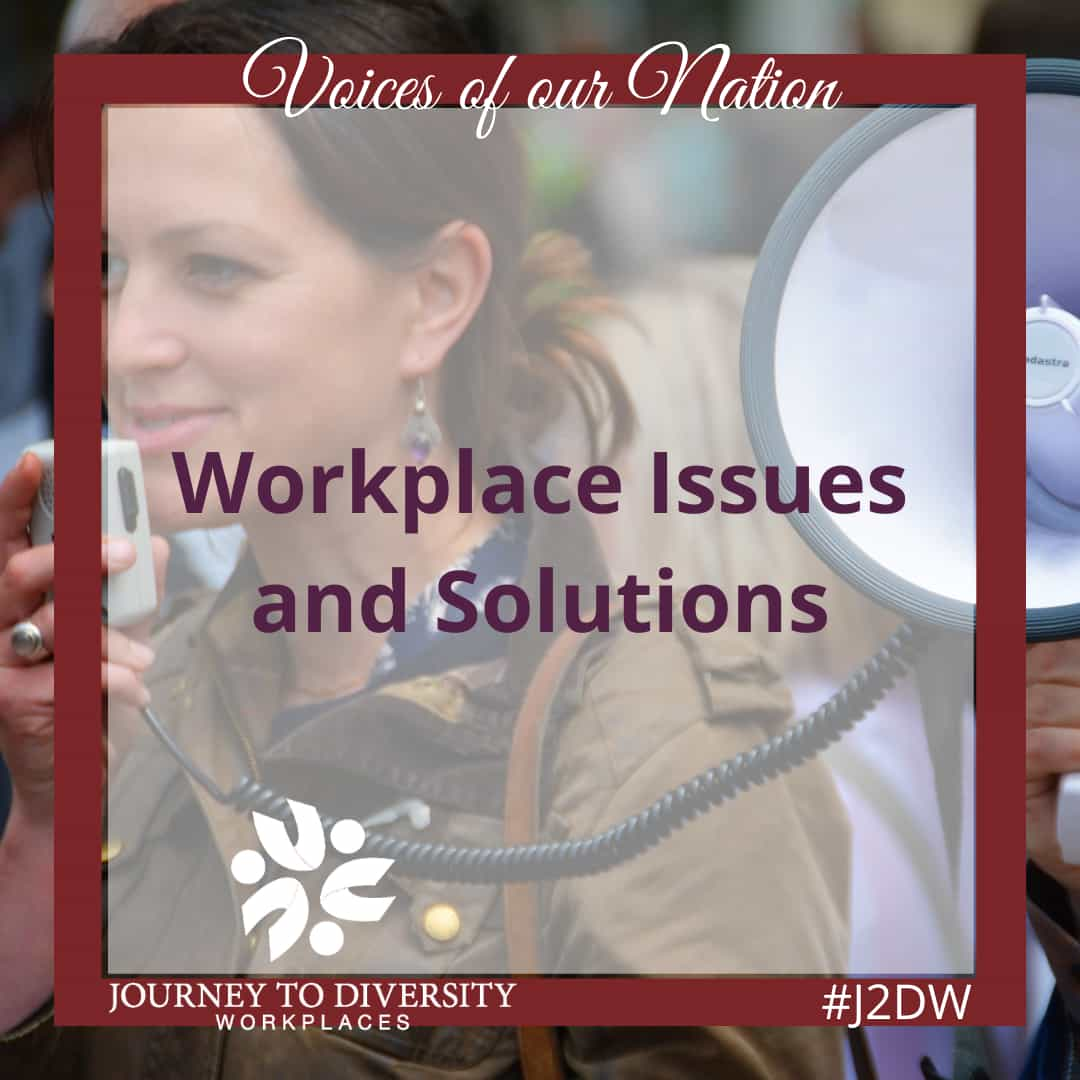Academia is already daunting on its own, but when you factor in ableism, the conversation often comes to a halt. Many individuals of authority are afraid of uncomfortable discussions, the ones that spill over into unventured topics, and, likely, the same ones they are not educated enough upon. The hesitancy to tackle subjects like ableism, Indigenous rights, antisemitism, racism, and most other ‘isms’ you can name, gives permission to the world to continue as it were and suppresses the needs, concerns, and valid criticism of those willing to take a stand.
Tag: workplace issues
Our top articles & essays for 2022
A lot has been written by our summer students and volunteers and published by us, most in the last year.
Here we present our top 8 articles & essays.
- The Unemployment Crisis of Indigenous People in Canada
- The Pros and Cons of Hiring Older Employees vs. Younger Employees
- 5 Ways to Promote Inclusivity of Indigenous People in the Workplace
- Ethics, organizational culture and behaviours
- How is Systemic Racism Affecting Childcare Employees?
- Sensory Overload of Neurodivergent Individuals at Work
- Bystander intervention training in the workplace
- Challenges to Rural and Urban Workplace Diversity
We hope you will join us for more fantastic workplace-related articles in 2023!
Some of these articles were funded by the Government of Canada.
Cross cultural training and basics in the workplace
In today’s society, acts of racial injustice in businesses and mainstream media have been surfacing at uncharitable levels due to the accessibility offered by social media. I log onto my Instagram or Facebook page and instantly am dumbfounded by the long threads of racial injustice, systemic racism, police brutality, and white privilege. While historically, this subject matter is not all so new, we now have the platform and resources to examine systematic racism towards people of colour, and work towards debunking the myth that people of white descent are the frontrunners of society. As a result, racial diversity in the workplace is being widely addressed in the sense that some companies have responded with acts of solidarity and a “changed perspective”. Although more companies are taking action to make our workplaces more diverse and inclusive, let’s face it, there is much work to be done. In today’s post, I am talking about the powers of Cross Cultural Training in the workplace, and how to conquer common biases. After all, in Canada the labor force is nearly 100% dominated by immigrants, which make up 80% of our entire population growth (Government of Canada 1).
Cross cultural training (CCT) may be a phrase you have never heard of in your life so let me polish the pearl here. This type of training directs our employees to overcoming cultural challenges at work, or in life, when being in the midst of coworkers whose culture, values and beliefs differ widely. In essence, CCT allows employees to break down barriers.
Most of us follow paths led by certain morals, beliefs, or a religion, which, if followed blindly, can establish barriers fueled by stereotypes for those different from us. Contriving preconceptions about others ceases our ability to grow as people, and stunt our understanding and willingness to learn about others. Through this form of training, other cultures are placed under a spotlight where all employees have the chance to learn about these unique cultures, and recognize the differences between how they present themselves and their motivations, vs how you would.
Secondly, building trust and a moral connection with a coworker is extremely important. I mentioned in a previous post about mental health in the workplace that once you start to open up, and establish a common ground with your desk partner, you may be able to produce better work, learn to communicate more effectively and a wide variety of other things. CCT results in greater trust. If I am someone who has recently immigrated or just has different beliefs than a coworker, I would feel comfortable knowing that my cultural viewpoints are respected, and I would feel comfortable pursuing my beliefs in a work environment. Once trust is established, altruistic tendencies tend to morph into greater cooperation and a more productive workplace.
CCT teaches employees the importance of hierarchy perception. I like to think of this as a way to simplify information, and make decisions. Creativity, and approaching a situation from different perspectives is something that every workplace needs within their decision making process, but a hierarchical system does not have room for visionaries and opinions. Those in greater power are often perceived as less open and more controlling of an employee’s approach towards workplace orders. Often, those coming from different walks of life have different ways to approach situations as a result of their past experiences. It is through CCT, that we teach how cultures perceive hierarchies, and lines not to cross within management. Hierarchy perception determines if a person in power has the right to actually be in that role which helps to promote diversity and inclusion, so that these decisions aren’t dictated by biases that have nothing to do with work, but rather the person.
So, you now have some knowledge on why cross-cultural training is valuable and how it can enhance productivity in a workplace, but the bigger question is, how can this training be presented to employees? Well, effective presentation is the most important thing here. When preparing a cross-cultural training program, employers should heavily take into consideration who they are actually presenting too. A workplace/audience may have multiple employees that don’t understand English as well as others, so, it would be appropriate to deliver the program in the language that each employee understands (a translator may be necessary in this instance). Prepare handouts or a slideshow with information and knowledge about one’s culture.
The ability to learn different aspects of a new culture is not something one can learn quickly, but it is also important to keep in mind that the employee that has recently immigrated or has different beliefs than you is doing the same thing. Encourage your employees to ask questions (in a respective manner). CCT should be able to combine native culture with foreign culture and have them intertwine in a beautiful manner.
Sources
Immigration, R. and C. C. (2022, June 6). Infographic: Immigration and Canada’s economic recovery. Canada.ca. Retrieved July 23, 2022, from https://www.canada.ca/en/immigration-refugees-citizenship/news/2022/02/infographic-immigration-and-canadas-economic-recovery.html
Palladino, P., Author Peter Palladino , (2021, March 3). How to create an effective cross-cultural training program. Sales & Marketing Management. Retrieved July 23, 2022, from https://salesandmarketing.com/how-create-effective-cross-cultural-training-program/
This article was written by summer student Bayden Summers and edited by summer student Ilesha Prabhudesai. This article was funded by the Government of Canada.
Addressing Accessibility Barriers With Remote Work Part II
This blog post is the second of two articles on disability and remote work. The first entry focused on some of the accessibility barriers that disabled employees face in the workplace, and how the normalisation of remote work has helped to overcome many of those barriers. This post considers what it means for disabled employees to return to in-person work now that many companies are adopting a hybrid model or mandating a return to the physical workplace.
Since the onset of the COVID-19 pandemic, disabled employees have found that remote work gives them the opportunity to work in an environment that accommodates their needs more easily than working at the office. As I discussed in the first segment of this blog, disabled Canadians who qualify for employment remain vastly underrepresented in the workforce, and the inaccessibility of many work environments is a contributing factor. The widespread adaptation of remote work during COVID might just have provided a needed solution to overcoming some of these accessibility barriers. But now that many employers are implementing a return to the physical workplace, it’s worth questioning what this means for disabled employees.
It’s true that many people are experiencing feelings of isolation and are impatient for the chance to get out of the house, which can help to maintain a work-life balance. But a mandated return to the office may present a serious setback for disabled employees who have benefitted from the convenience of working from home. Remote work has contributed to both their physical and mental wellbeing, and after two years of operating out of what may be for them an optimal work environment, some disabled employees might be reluctant or unable to make the adjustment to working in-person, especially if they started a new position remotely and may not know what to expect at the office in terms of accessibility.
Employers may believe that in-person work is the best option for everyone, but the notion that jobs can only be performed in a physical workplace fails to take into account the experiences and concerns of disabled people. Granted, some industries are dependent upon in-person labour, but the past two years have proved that many jobs can in fact be performed remotely. Why should disabled members of the workforce be forced to return to the office when they can work equally, if not more efficiently, in an environment in which their needs are met?
We can see a similar phenomenon taking place in the post-secondary education system, as many institutions have shifted toward a return to the classroom over the past year. A workplace and an academic setting may be different environments in nature, but there is considerable overlap between a student’s ability to focus in class and succeed in their studies and an employee’s ability to perform their tasks and do their job well.
As a case in point, Anushay Sheikh filed a human rights claim against U of T Law before the Ontario Human Rights Commission. After accepting an offer of admission to the law school in 2021 and deferring acceptance for the fall 2022 semester, Sheikh soon ran into barriers when requesting accommodation from the university. As a student with disabilities, they requested access to Zoom links for lectures so that they could sometimes attend classes remotely on an as-needed basis. According to news reports on the case, U of T Law Faculty repeatedly refused on the basis that university programs are delivered in-person, and that the shift to online learning was only intended as a temporary COVID measure. The university technically has a system in place to provide lecture recordings for those who miss class for both COVID and non-COVID related reasons, but disabled students at U of T are still reporting that accommodation requests to learn remotely are being denied (Yousif & Frances, 2022). According to Sheikh, several of their professors were supportive, but the administration was ableist (Damte, 2022). After months of back-and-forth with the administration, Sheikh filed a human rights claim in January 2022.
“As someone that suffers from chronic pain flare ups, PTSD, and anxiety, the option of remote learning gives me the flexibility I need to navigate my symptoms,” Sheikh asserted in an email response to Journey to Diversity Workplaces. “[… B]eing able to make decisions about my health as an adult without asking permission from older white administrators will not only help my ability to access course material, but would also save a significant amount of distress that comes with asking people in positions of power for basic dignity.”
It’s easy to see how similar principles can be applied to members of the workforce and their requests to work from home. The COVID-19 pandemic has proved that many jobs can in fact be performed remotely, so there’s no substantial reason for employers to deny their workers the right to such accommodations, certainly not if a company is meant to uphold inclusive practices.
It’s also worth bearing in mind that a non-inclusive work culture or inaccessible workspace is likely to steer a disabled employee toward other companies and industries where they can be accommodated more easily, even if they might otherwise be the perfect candidate for a particular job. Such a culture will, in turn, inhibit a company’s ability to be more inclusive in the long run because of the lack of disabled voices on its team.
When asked by Journey to Diversity Workplaces about how disabled students can benefit from remote learning in the long run, Sheikh asserted: “[…] We live in a society that has perpetuated toxic work and study expectations, including not listening to your body and mind, not taking breaks, forcing yourself to conform to a specific learning style that may not work for you, etc. By adopting a universal design, one in which many different needs are met without requiring students to other themselves to get accommodations, universities can and will attract people who think in different ways. A diversity of thought is crucial to having a well rounded institution, and by extension, a well rounded and representative legal profession. It’ll also allow students, as adult human beings, to make decisions about their health and well-being. If that means learning from home to get the most out of a lecture, so be it.”
At the end of the day, a company’s internal inclusivity/anti-discrimination policies are meaningless if the environment is not accessible (Claus, 2021). Many workers are eager for a chance to return to the office, but leaving the option open for remote work for those who can benefit from it is one significant way in which employers can make their work culture more accessible. Disabled employees have been pushing for the opportunity to work remotely for a long time. Accommodating those requests is one way in which employers can show they are listening to the disabled voices on their team, and move towards a work culture that is more diverse and welcoming of everyone.
Sources
Berting, P. (2022, February 14). Law student files human rights claim against U of T over zoom link accessibility. The Varsity. Retrieved July 21, 2022, from https://thevarsity.ca/2022/02/14/human-rights-case-u-of-t-law-student-zoom/
Claus, C. (2021, October 4). How to Improve the Hiring Process & Create a More Inclusive Workplace, According to an Accessibility Support Engineer. InclusionHub. Retrieved July 21, 2022, from https://www.inclusionhub.com/articles/improve-hiring-process-create-inclusive-workplace
Damte, M. (2022, February 28). Inclusive Excellence? Recent Human Rights Tribunal Application Says Otherwise. Ultra Vires. Retrieved July 21, 2022, from https://ultravires.ca/2022/02/inclusive-excellence-recent-human-rights-tribunal-application-says-otherwise/
Peng, J., & Kiessel, L. (2020, October 27). For those with disabilities, shift to remote work has opened doors (video). The Christian Science Monitor. Retrieved July 14, 2022, from https://www.csmonitor.com/Business/2020/1027/For-those-with-disabilities-shift-to-remote-work-has-opened-doors-video
Yousif, N., & Francis, A. (2022, June 5). U of T Law is denying access to virtual classes, disabled students say – despite COVID-era shift to online learning. Toronto Star. Retrieved July 21, 2022, from https://www.thestar.com/news/gta/2022/06/05/u-of-t-law-is-denying-access-to-virtual-classes-disabled-students-say-despite-covid-era-shift-to-online-learning.html
This article was written by summer student Cossette Penner-Olivera and edited by summer student Bayden Summers. This article was funded by the Government of Canada.
Addressing Accessibility Barriers With Remote Work Part I
This blog post will be one of two articles on disability and remote work. This entry focuses on some of the accessibility barriers disabled employees face in the workplace, and how the normalisation of remote work has helped to overcome many of those barriers. The second blog post will consider what it means for disabled employees to return to in-person work now that many workplaces are adopting a hybrid model or mandating a return to the physical workplace.
More than two years into the COVID-19 pandemic, the shift to remote work has become a “new normal,” with many Canadians having adjusted to a work-from-home setting. But for many disabled employees, the opportunities that have arisen as a result of this shift are considerable.
The fact is, disabled employees have long been advocating for the right to work (Peng & Kiessel, 2020), but for the most part they’ve been turned down. This is partly because many employers believe that allowing for remote work will give disabled employees an unfair advantage over their able-bodied coworkers.
Despite the rising inclusivity in many work settings, some disabled employees may feel hesitant to ask for further considerations out of fear that they are asking too much, and should simply be grateful for those accommodations they have received. Well-meaning supervisors might still have overlooked efforts to make the workplace more accessible, simply by failing to consider the extent of accommodations that disabled employees really need. And that’s without considering the fact that most office buildings, especially old buildings, are designed without disabilities in mind. Employers might install access ramps, but that doesn’t change the unfortunate reality-that a building’s doorways might not be wide enough to allow passage for wheelchairs. Even the commute to get to work usually comes with barriers, such as a lack of elevators at some subway stations.
In Canada, the rights of disabled employees are protected under the Employment Equity Act (Canada.ca), but unfortunately, stigma toward disabled people remains, creating considerable barriers to equal employment opportunities. The belief that disabled people are less qualified or incapable of performing their duties as effectively as their able-bodied counterparts is a common one. And when it comes to the physical workplace itself, accommodations for disabled employees, like the provision of special chairs or modified work hours, are seen as too expensive or too complicated to manage.
Legislation doesn’t change the fact that disabled Canadians are disproportionately unemployed compared to able-bodied Canadians. The numbers speak for themselves: a 2017 survey by Statistics Canada found that there are approximately 645,000 disabled Canadians over the age of 15 who have the potential to work and yet are not currently employed. In the 25-64 age group, 80% able-bodied people are employed, whereas only 59% of disabled people in the same age range are employed (Morris et al., 2018).
Now that the world has largely shifted to working from home, many of those barriers have been reduced or have vanished completely for disabled employees, opening up opportunities that didn’t exist before the pandemic. Many disabled employees expressed that they could focus more easily and be more productive at work when given the opportunity to customise their workspaces to accommodate their needs freely (Peng & Kiessel, 2020). People with chronic pain, for example, can work in a setting that suits them best without having to sit for long periods of time in uncomfortable office chairs. Some able-bodied people believe that an employee needs to sit at a desk in order to be productive and to fit a certain image of professionalism, but that isn’t always the most comfortable setup for those with chronic pain.
When it comes down to it, there is a great deal of freedom to be found for disabled people in not having to request an employer who holds a position of power over them for special accommodations. Plus, it’s worth noting that many disabilities are invisible, and employees are not required to disclose their disabilities to an employer (although they still need to self-identify as disabled in order to count as a member of those groups protected by the Employment Equity Act). Remote work opens up further opportunities in this regard.
The removal of transportation and physical accessibility barriers is one obvious benefit to be reaped from remote work. In particular, those with pain and mobility-related disabilities are likely to benefit from not having to commute to an in-person workplace. But beyond that, thanks to remote work, people with all sorts of disabilities are able to work in an environment that best suits their needs.
The virtual nature of remote work allows employees to use assistive technology more easily than they might have done in the office. For example, Zoom’s closed captions function is enormously beneficial during meetings to employees who are Deaf or Hard of Hearing. Text-to-speech software serves to benefit employees with visual disabilities, speech disabilities, and learning disabilities like dyslexia The ability to work in a customised environment at home also benefits neurodivergent employees by removing the risk of sensory overload at the office. Some workplaces ban sensory tools like fidget spinners because of a lack of understanding of how neurodivergent people function best, but working at home allows people with ADHD to use them freely to improve focus and reduce stress.
Remote work is not a universal, permanent solution to the discrimination disabled people face when it comes to employment, nor should it exempt employers from continuing to implement inclusive practices and from making their workplaces accessible. We certainly shouldn’t use the possibilities presented by remote work as an excuse not to hold employers accountable for discriminatory behaviour. Education around disability that emphasises listening to disabled voices should become normalised regardless of whether people are working from home or from the office. But leaving the option open for remote work is one major way in which employers can ensure the equality of disabled people working in Canada and contribute to a more diverse workforce.
Sources
Farrer, L. (2022, March 30). Accommodating Disabilities In Remote And Hybrid Work. Forbes. Retrieved July 14, 2022, from https://www.forbes.com/sites/laurelfarrer/2022/03/30/accommodating-disabilities-in-remote–hybrid-work/?sh=3ecfde0f2c17
Government of Canada. (n.d.). Employment Equity Act. Justice Laws Website. Retrieved July 14, 2022, from https://laws-lois.justice.gc.ca/eng/acts/e-5.401/page-1.html
Howard, J. (2022, March 22). The benefits of remote work for people with disabilities. InclusionHub . Retrieved July 14, 2022, from https://www.inclusionhub.com/articles/benefits-of-remote-work
Morris, S., Fawcett, G., Brisebois, L., & Hughes, J. (2018, November 28). A demographic, employment and income profile of Canadians with disabilities aged 15 years and over, 2017. Statistics Canada. Retrieved July 14, 2022, from https://www150.statcan.gc.ca/n1/pub/89-654-x/89-654-x2018002-eng.htm#a5
Peng, J., & Kiessel, L. (2020, October 27). For those with disabilities, shift to remote work has opened doors (video). The Christian Science Monitor. Retrieved July 14, 2022, from https://www.csmonitor.com/Business/2020/1027/For-those-with-disabilities-shift-to-remote-work-has-opened-doors-video
This article was written by summer student Cossette Penner-Olivera and edited by summer student Ilesha Prabhudesai. This article was funded by the Government of Canada.
What is Work Culture? Where does it come from and how do we change it?
There are few topics as broad, or fundamental as culture. Most of us only recognize the dimensions of our culture when we begin to compare our way of life to that of another. Workplace culture is built of all the customs, habits, traditions, values, skills, beliefs, and knowledge of the people included in the company. (Nelson, Quick, Armstrong, Roubecas, Condie, 2021) It affects everything that happens, every action taken, and is shaped by every person that is included. Culture regulates behavior through norms and values, and in so defines the character of a company. (Nelson, 2021)
To get culture right it is crucial to have an idea of what it should look like and a plan for its formation before the start of an enterprise. Defining what is desirable and undesirable behavior is necessary to guide staff toward business objectives in the best way. An inclusive and supportive culture leads to satisfied employees and can enforce those values into employee behavior. (Nelson, 2021) The same applies for a competitive or aggressive culture; its employees will work hard to achieve results but may focus less on their soft skills. (Nelson, 2021) When the values of the culture are the same as the values of its employees, it provides a sense of identity and motivates them to higher levels of achievement.
There are three different parts that compose the culture of an organization. There is the structural system consisting of policies, management processes, and plans. (Nelson, 2021) This structural culture of the organization is crafted by its leaders. It also includes objectives, the authority hierarchy, reward systems, recruitment, and training methods. (Nelson, 2021) As a result, the structural systems produce formal norms, traditions, values, and knowledge. Then there are expressive systems which are created by organizational history, the business environment, and society itself. (Nelson, 2021) These systems propagate the blueprint for how meanings, values, and beliefs are espoused within the organization. (Nelson, 2021) Finally, there are the individuals within the organization. Each person brings their own beliefs and personalities into the mix that shape the culture of the group.
Depending on the unique composition of a culture it can bring strengths or weaknesses that can make or break an organization. An outcome of the behavior controlling nature of culture, is that it can influence employees to be competitive, support creative thinking, demand punctuality, or signal how important it is to follow the policies of the organization. (Nelson, 2021) A culture that promotes open communication can reduce conflict or encourage relationship building, which in turn may increase productivity and improve employee satisfaction or stability within the workplace. (Nelson, 2021) In the inverse perspective, culture can lead to a variety of significant problems. A weak culture (which is one that can easily change from day to day) can result in instability that is stressful to some. (Nelson, 2021) A culture that is too strong may be resistant to change and prevent the development and adaptation that is critical for survival. (Nelson, 2021) It is also possible for a culture to walk astray from its founding values. If bad behavior is left unchecked, it can lead to its promotion as employees may interpret lack of punishment as a green light. (Nelson, 2021) Culture is a big attraction for the modern job seeker and having a misalignment between ideals and reality can lead to job dissatisfaction quite quickly.
It all starts with an idea. When an entrepreneur or founding party chooses their business, the environment that it operates within defines the first set of rules with its historical expectations. From there the values and beliefs of the founders are poured into the organization’s structure giving the second layer of culture. Jeff Bezos, founder of Amazon, once said “Our culture is friendly and intense, but if push comes to shove we’ll settle for intense”. (Nelson, 2021) The third layer comes as the structural systems of policy and plans are laid out by the founders. By now the expressive systems of beliefs and behaviors will have formed naturally in the process of the founders working together and will evolve as others are added to the organization. (Nelson, 2021) The culture will follow the personality of the CEO in a smaller organization but as it grows it will dilute to include the influences of other directors and members.
There are five points of attention that communicate the desired culture lying in the behavior of leadership. These include what leadership pays attention to, how they react to crises, how they behave, how they give out rewards and how they hire and fire. (Nelson, 2021)
What leaders pay attention to is one of the most obvious clues to what is most important within the organization. They will have a certain set of behaviors, metrics, or objectives they need to monitor. Employees will be aware of what their boss cares about and take direction from observations. (Nelson, 2021)
How leaders react to crises can reveal a mismatch between proposed values and real values within the organizational culture. (Nelson, 2021) Imagine a company that says that it cares about its employees but doesn’t hesitate to introduce layoffs in a touch of hard times. Employees will pick up on this and share the story of what happened revealing the true nature of the organization for a long time. How leaders behave is often replicated by employees and will reveal what is acceptable behavior. (Nelson, 2021) If a manager tends to swear or complain about certain customers, it sends a signal about perceptions and beliefs within the organization. (Nelson, 2021) Bosses are often tasked with being role-models and coaches, so it is no wonder that their actions can be interpreted as accepted norms.
How leaders distribute rewards must be on message with the intended values of the organization to ensure that employees’ perceptions of company values are the same. (Nelson, 2021) Rewarding staff for performance when espousing the value of tenure shows the true values of directors and CEOs.
How leaders hire and fire employees defines the culture in some of the starkest terms. The decision to fire or not to fire an individual for failure to perform or for unethical behavior communicates values of the company and will reinforce that culture by the impression formed by employees. (Nelson, 2021) Notably, when hiring, leaders often look for those who share similar beliefs to promote the desired culture in the organization. (Nelson, 2021)
Workplace culture is constantly changing. Through the shifting of society to the changing of the work team, it is always stepping forwards and back and side to side. Controlling the change is another matter entirely, as the myriad of factors that compose a culture are often invisible except in certain situations. Part of what makes up a culture is often unconscious as we can be unaware of our attitudes and beliefs, and this can make grappling with it a challenge. (Nelson, 2021)
Cultural intervention is a strategy wherein the leadership will review all communications, past and present, to make changes that reflect the new values they are trying to promote. (Nelson, 2021) After a period to allow staff to adopt the new values they will remove employees who do not keep up and hire new ones, with the hopes they will take to the proposed values. (Nelson, 2021) Changing culture takes time and requires constant effort on the behalf of management.
Citations
Organizational Behavior (2021). Nelson, Quick, Roubecas, Condie, Armstrong
This essay was written by summer student Adam Best and edited by summer student Hannah Mastin. This article was funded by the Government of Canada.
The facts about workplace wellness programs
As much as a business is a vehicle for profit, it is capable of being a force for good. Workplace wellness programs help businesses by improving the physical and mental health of their employees. This aims to give back to the business by increasing the capability of their staff to perform, and reducing expenses for health care coverage. In a 2014 U.S. study, workplace wellness programs were divided into the following categories, from most to least frequent: Nutrition/Weight Management, Smoking Cessation, Fitness, Alcohol and Drug Abuse, Stress Management, Health Education, and Other. Many businesses use financial or social incentives to help motivate staff to participate.
Workplace stress influences behaviours like productivity, staff turnover, employee satisfaction, and absenteeism. A 2017 survey said 25 percent of Canadians have left jobs due to stress and 17 percent were considering it. Furthermore, a study from Health Canada in 2000 showed the increased health risks of high stress environments. When expected to contribute high effort for little reward there is a 2-3x increased risk of injuries, 2x risk of substance abuse, 3x risk of heart problems and back pain, and a 5x increased risk of certain cancers. In a high-pressure environment where employees have little control over their work, there are 2-3x risk of infections, mental health problems, and conflict; as well as greater risks of cancer and injury.
Depending on which study you look at, the efficacy of workplace wellness differs. An abstract posted in the Journal of Occupational and Environmental Medicine in 2011 claims measurable improvements in “those who are underweight, those with high systolic or diastolic blood pressure, high total cholesterol, high low-density lipoprotein, low high-density lipoprotein, high triglycerides, and high glucose.”. Another study, from Rand Health Q. in 2013, concluded that the impacts of a wellness program are sustainable and “clinically meaningful” but estimated that savings on health coverage could be lacklustre.
Other studies, including a publication from Harvard, cited no clinical differences and cautioned that return on investment (ROI) would be underwhelming in the short term. It should be obvious that aside from smoking and other dangerously bad health habits, no one should expect a large ROI in as little time as a year or two. Workplace wellness is a long-term investment that protects the longevity of workers and improving fitness and wellbeing takes time.
When administering a wellness program, large companies have the benefit of a greater administrative task force, bigger budgets and facilities. Small businesses must overcome potentially rural settings with less access to providers, smaller budgets, fewer management hours, and increased difficulty of protecting employee privacy. Employee assistance programs are popular among big businesses offering aid with mental health issues or substance abuse problems. Big firms also occasionally have 24/7 Teladoc services, paid naps, in-house chefs to cook nutritious meals, free gym memberships, on site fitness classes, and unlimited paid time off. These perks sound great, but what about small businesses?
A small business can either build their own program or hire an external provider to manage the program. If going it alone there are two pillars to nailing wellness for small businesses. The first one is to be creative and aware of the needs of the workforce. Doing a little research in the form of surveys can help illuminate needs and wants of employees. Be weary that surveys aren’t always 100 percent reliable. The second is having a strong communication strategy; winging it can run the risk of coming off as unprepared and can damage employee buy-in.
Once the foundation is laid a quick trip to Google will net hundreds of creative options that work for a wide variety of unique business formats. The program can be as simple as encouraging extra walking breaks, free healthy snacks, or putting together an email newsletter to educate staff on the benefits of different healthy activities. These days it is not enough to just pay your employees, and most will appreciate the extra care and investment in their well being.
References
https://www.monster.com/career-advice/article/companies-good-wellness-programs
https://hms.harvard.edu/news/do-wellness-programs-work
https://pubmed.ncbi.nlm.nih.gov/33289018/
https://www.ncbi.nlm.nih.gov/pmc/articles/PMC4945172/
https://www.reference.com/world-view/percentage-lives-spent-working-599e3f7fb2c88fca
ORGB (2018) Nelson, Quick Armstrong, Roubecas, Condie
This article was written by summer student Adam best and edited by summer student Hannah Mastin. Thia article was funded by the Government of Canada.
Top 5 articles of 2018!
We are fortunate to see an increase in visits to our website in 2018 with lots of help from our active volunteers! Now we present the top 5 articles visitors read on our website in 2018.
5. How to deal with religious accommodations in the Workplace
Freedom of religion, in Canada, is a constitutionally protected right that allows religious believers the freedom to assemble and worship without limitation or interference. Religious discrimination is treating individuals differently in their employment because of their religion, their religious beliefs and practices, denying their reasonable request for accommodation or a change in a workplace rule or policy that denies employees equal opportunities due to their religious beliefs or practices. Canadian employers are required to accommodate the reasonable needs of religious employees in the workplace.
4. Women in the Workplace: The Hidden Battle
Throughout our history, women have adopted new roles from working as a housewife to entering the workplace and providing for their family or oneself. As women entered the workplace, we saw issues of sexual harassment, unequal pay and opportunity starting to emerge. These issues are still seen and frequently voiced today as women are continuously taking a stand for their rights. Unfortunately, there are many issues that go unnoticed that need to be addressed. Every day women have to prove that they are just as good or better than their counterparts and when they fail to do so they are labeled as weak, incompetent or just plain lazy.
3. Lack of Diversity in the Workplace Can Cause Stress Among Employees
The success of an organization in today’s competitive world depends upon how well it embraces the challenges of diversity and realizes its benefits. Employees from different backgrounds, ages and ethnicities bring their own set of experiences and world views, and are better able to provide a wider range of solutions to developing problems. Most of all, a lack of diversity has been linked to increased discrimination which in turn leads to elevated stress levels among employees. The National Center for Biotechnology Information note that discrimination due to immigrant status, legal status, skin tone or language can contribute to increased stress in individuals.
2. The Pros and Cons of Hiring Older Employees vs. Younger Employees
Ever thought you would one day be in a position where you would have the decision on your hands to make or break someone’s career? Well if you are, here is something that you might come across depending on the nature of your job. This article aims to analyze some of the main factors to consider while picking the right person for the job. At the very outset, I must make it clear that I am referring to older as in more experienced professionals and not just being ageist.
1. Workplace Issues and Solutions
There are a variety of workplace issues that both employers and employees encounter. Some of these issues are minor while other workplace issues are more significant and require frequent attention from employees for the workplace to function properly. While it is the responsibility of management to take steps to develop strategies to combat workplace issues, employees also have a responsibility to speak up when they recognize issues that contribute to or may eventually lead to problems.
This article was mostly contributed to and edited by J2DW volunteers!
Workplace Issues and Solutions
There are a variety of workplace issues that both employers and employees encounter. Some of these issues are minor while other workplace issues are more significant and require frequent attention from employees for the workplace to function properly. While it is the responsibility of management to take steps to develop strategies to combat workplace issues, employees also have a responsibility to speak up when they recognize issues that contribute to or may eventually lead to problems.
Communication between employers and employees is very often a cause of workplace issues. If employers are not open to listening or implementing solutions that would make life easier or more efficient for workers, it can create the perception that the employers do not care about the employees. This perception can cause employers to lose the respect of the employees. Resentment and bitterness often follow which usually will lead to other issues.
Negative attitudes and less than professional behavior can poison the workplace atmosphere. Conflicts will arise in every workplace at one time or another. Rather than let issues fester and resentment accumulate, it is essential that active steps be taken to find creative ways to minimize or eliminate common problems. Employers and employees should work to peacefully resolve these issues with colleagues and to develop creative strategies that make it easier for a possible solution to be reached that incorporates the various ideas from employees and employers. It is important for the specific issues to be properly identified so that effective strategies can be implemented to address these concerns within workplaces and communication is a key aspect of conflict resolution within the workplace.
Tensions in the workplace will occur on occasion, but before you speak to others about your concerns, you should always make sure your own behavior is part of the solution, not the problem. For example, if you feel constantly annoyed because a coworker takes extra long breaks throughout the day to smoke or go to lunch, try to control your own annoyance rather than your co-worker. Remember that others probably notice this behavior also and that when it is time for the boss to hand out bonuses or promotions, your long-lunching friend may be left behind. Try to channel your irritation into your own projects and duties. This strategy may help motivate you to more productive and you may be pleasantly surprised at the rewards. Make sure that you do not mimic the behaviors you find upsetting. Always arrive on time to work and stay until the end of the day. Take your allotted lunch period and no more. If you must take a break, take a quick walk to get some exercise.
Workplace problems require that people work together toward appropriate solutions and not create more issues. If the type of situation in your workplace is significant you may want to suggest that a meeting is held to address your concerns. During the meeting discuss the workplace problems and brainstorm solutions to solve it. If people are asked for their input they are often more willing to actively participate in finding a solution. When better problem solving strategies are implemented and consistently reevaluated it will allow for workplaces to function more effectively and efficiently.
This article was contributed by volunteer blogger Shan Simpson.









